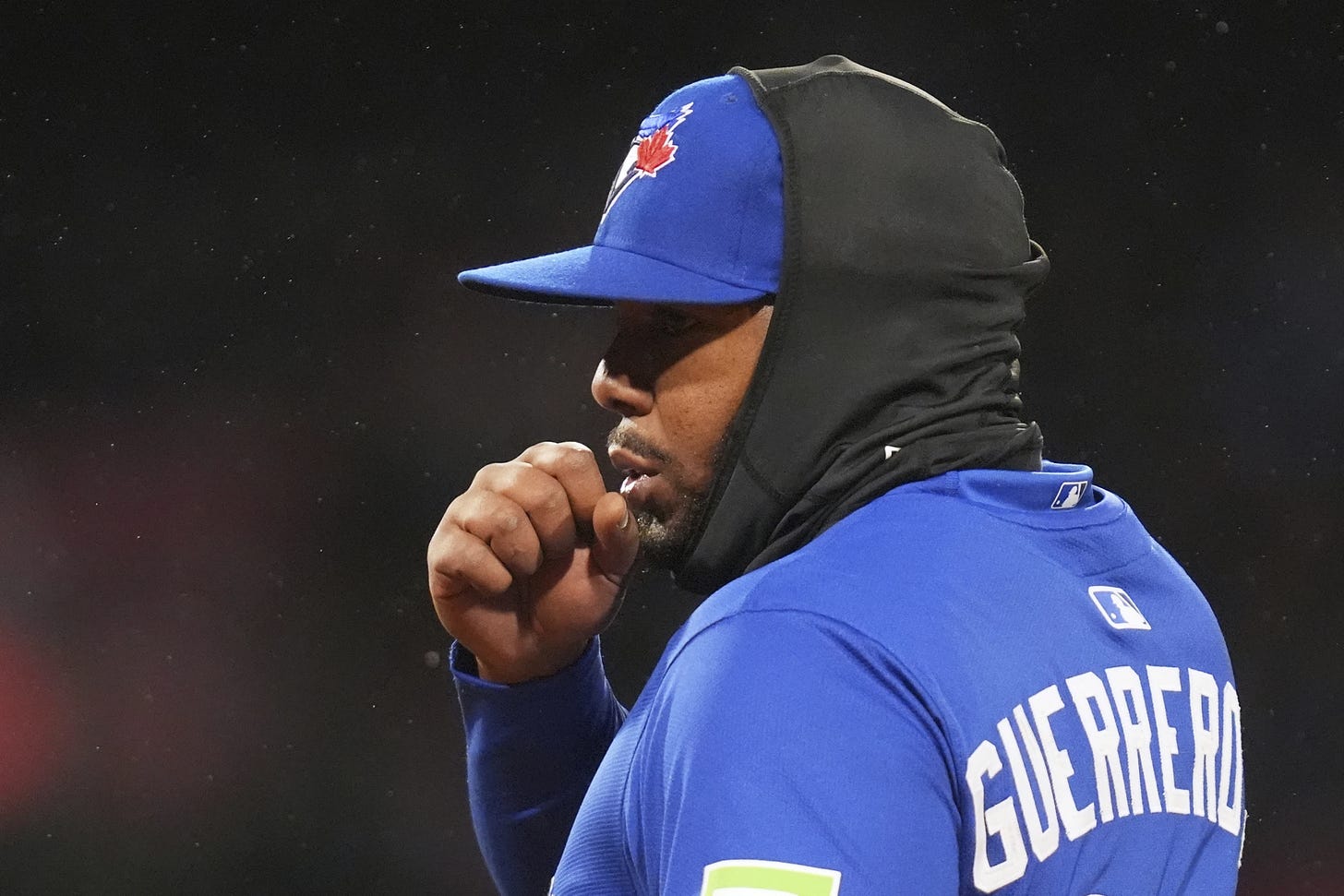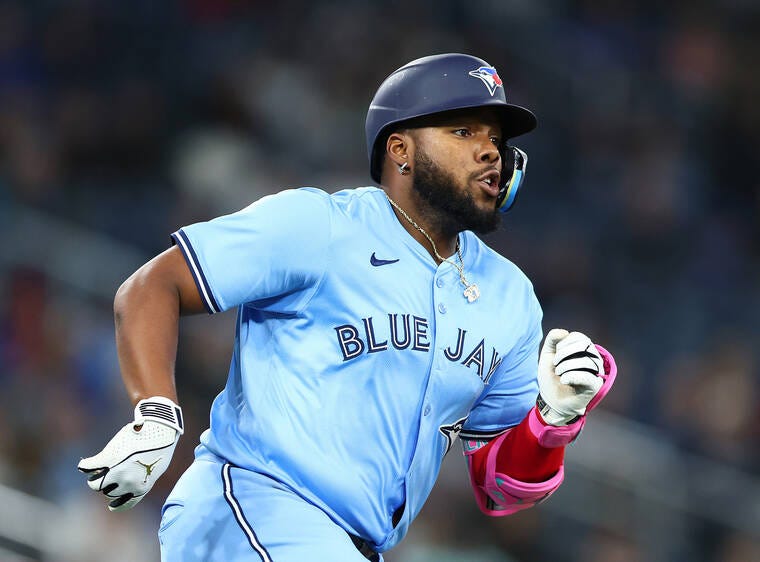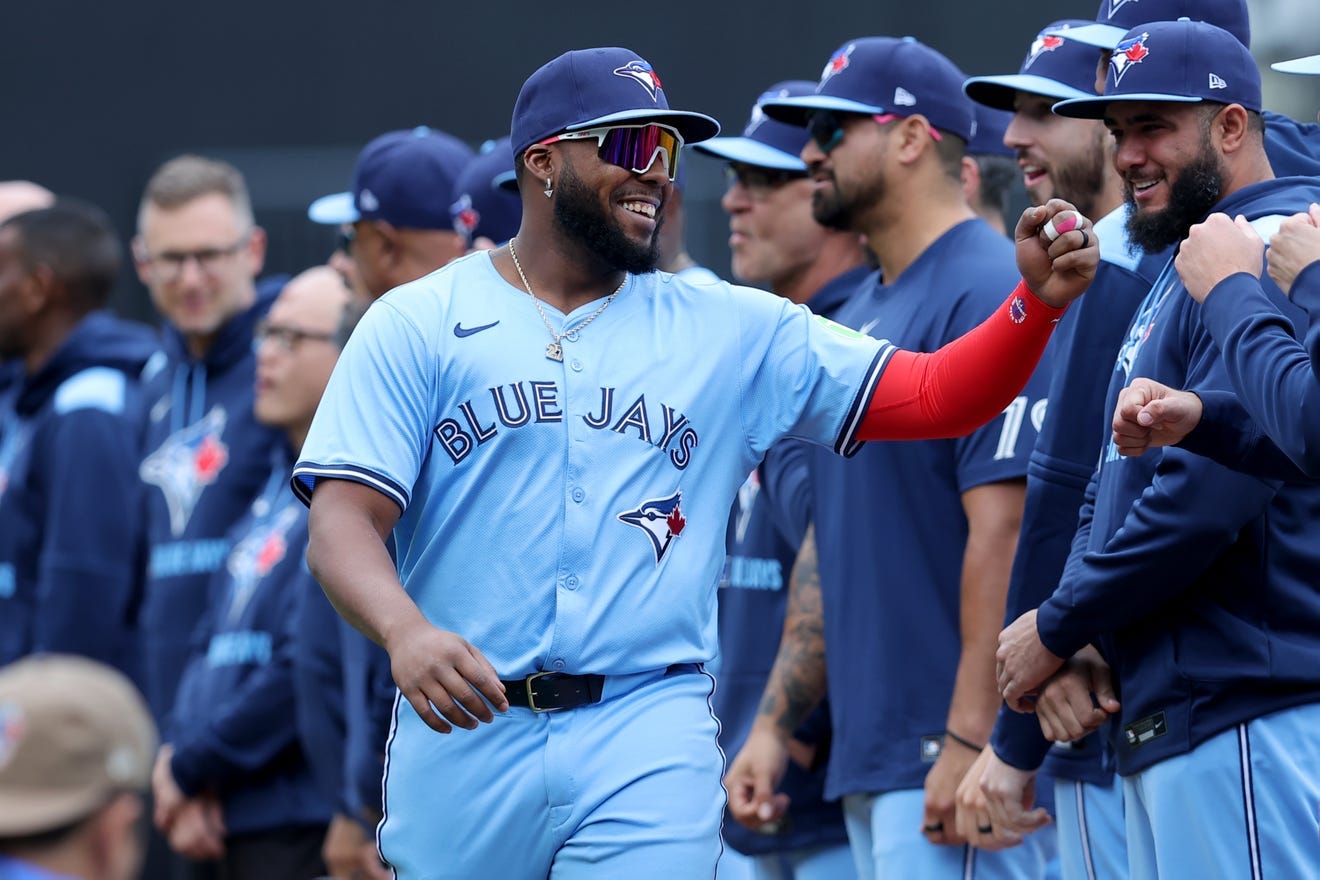
Coming into the Toronto Blue Jays season, one of the team’s most pressing questions was sorting out just what to do with their perennial All-Star and pending free agent, first baseman and DH, Vladimir Guerrero Junior.
They avoided arbitration by signing him to a one-year deal prior to camp opening but as spring training arrived, passed by and slipped into the rearview mirror, the volume only increased around Toronto’s brightest star.
His individual future, one way or another, has it has been for a decade, totally intertwined with theirs, since he joined the organization as a teenager.
Guerrero spoke openly with ESPN while in midst of negotiations, the sheer particulars that were circulating on both sides, in their raw value alone, that, while not totally creating an impasse, put forth something of an understanding: any deal, it wouldn’t be easily solved just two weeks into the season.
Well, how ‘bout those Jays, eh?
Officially confirmed on Wednesday, the team and Guerrero have agreed to terms on a 14-year, $500-million dollar extension that will keep him in The Big Smoke for the rest of his career, until he’s 40, in 2039 (pending a physical). Per The Athletic, the crux of the deal is based around a $325 million singing bonus, while the rest of the $175 million will go towards paying his actual salary, a $35.71 million-dollar average.
It is the third largest contract in baseball, in total dollars earned, behind only Shohei Ohtani’s $700-million and Juan Soto’s $765-million.
After months, years even, of worry, over how Guerrero’s potential free agency could play out, be it with money, morals or championship ability considered, those immediate fears can be put to bed.
Restful nights, from North York to the Jays contingent out in North Vancouver, enjoyed by all once more.
But going forward? The Jays with their man and their man, with his money, sorry, thrice-over generational wealth?
That is the question.

Multiple things can be true at once.
For one, Guerrero is a fabulous baseball player, at his strongest, one of the best pure hitters in the sport, with Gold Glove-winning defensive upside and an impressive trophy case to match (a four-time All-Star, two Silver Sluggers, a second-place AL MVP-finish in 2021, sixth place in 2024, etc).
As a much-celebrated prospect, while he made his name on the back of his terrific power and hitting (that which, was granted a rare 80 on the fabled scouting scale), he has also worked diligently to expand his offensive profile during his seven seasons thus far in the bigs, becoming a far more realized and complete player behind the plate. Working to get on base with more purpose, driving contact and expanding his zone to make the most of each and every AB, even if the homers (and the resulting strikeouts in pursuit) are still in the main attraction. And fair enough.
Few players, when they do make contact, are better choices in the box, as a three-time 30 and one-time 40 home run hitter can attest.
But on the reverse, as has been spoken in this space before, there is Guerrero’s inability, as it stands, to reproduce his career-high season of 2021. And while it isn’t a dealbreaker per se, it has more firmly placed him in a specific category of player. Elite, excellent even, a ballplayer on which a franchise can orbit around but not a cut-and-dry superstar in the way Soto or Ohtani are: expect now, he’s getting paid in their tax bracket, relative the understood pay gap. Half a billion-plus either way, is half a billion-plus when compared to what the fans filling the seats are bringing home.
Now, can Guerrero, at 26, already in thick of his prime, live fully up to that billing, that expected promise, over the next fourteen years? Conventional wisdom, through the ageing curve and practical application of his skillset as developed to this point would say no, although it would be premature to totally rule out any particular evolution.
The idea, naturally, in a perfect world (even as the doubts swirl) is that the Jays, after locking down their other free agent to be, in Bo Bichette, can parlay the potential the duo has held for years now, in bringing themselves ever-closer back to World Series contention. The team’s work-in-progress status is well-spoken too and any judgement made in April, during the grind that is the baseball season, is too early, of course. Though as of this writing, here stand the Jays at 8-5, looking to sweep their four-game series with Red Sox and more consistently establish the reaching-the-postseason-and-having-success momentum that has eluded them over the past two years.
Good stuff, it is, even if Guerrero, with no home runs and just three extra-base-hits to his name, has started relatively slowly in the early going.
If the team can squeeze five, six years, at least, of in-contention ball out of this mega-deal, regardless of how the final years (which, as history dictates, will probably be shaky) play out, for the Jays’ sake, then let it be spoken into existence.
As there is a third component to this extension, that which goes beyond whatever results are produced on the diamond.

It isn’t any breaking any new ground to suggest the Toronto sports superstar gauntlet (and to a broader extent, the Canadian circuit) has found itself accustomed now, to mixed results when it comes to the whole free agency thing - attracting, developing and maintaining talent is traditionally far harder, be it in the NBA, MLB or the NHL in looking outside, for a variety of reasons: the financial implications, for some, the apparently pronounced cultural differences when compared to the United States or the lure of other markets, despite Toronto being a North American and global hub all its own.
Even after his mercenary run for the ages in 2019, brought in through a trade as he was, Kawhi Leonard decided to go home to Los Angeles, instead of staying with the freshly-minted championship-winning Raptors, when given the choice (as was his right, to be clear). The Maple Leafs brought John Tavares home and homegrown stars, William Nylander and Auston Matthews chose to stay but even then, that was only following their combined efforts that worked to turn the team into high-end competitor, after actual decades of baffling mismanagement and basement-dwelling play on the ice limited the prospect for legitimate, impactful recruitment (their ability or lack thereof to retain Mitch Marner however, remains to be seen).
So as the Jays have struggled the past few years, the growing uncertainty that Guerrero would go and move on to another team, from the one that brought him up, it wasn’t entirely misplaced.
He said all the right things, yes, about how important the city, the culture and the Jays-specific notion of playing behind an entire country has mattered to him and his family.
But it is understood that, until shown otherwise, those are just finely-honed, boilerplate platitudes.
Not entirely disingenuous but the player-to-player nature of modern pro sports is a fickle business and on the other side, one should never totally allow their emotions to rule their reality, should their favourite or best player go to “chase the bag”, as it were. Yet, despite that, Guerrero, well before he turned pro, has long occupied a unique space in both the Blue Jays and larger Canadian baseball fabric.
Though culturally Dominican, he was born in Montréal, during his father’s time playing with the Expos and almost by virtue of that, given their status now, as MLB’s lone team north of the border, has always seemed particularly attuned to the Jays. That now iconic-photo, of a young Guerrero, next to his father, waving stoically to the crowd at Olympic Stadium, cap in hand, has come to represent a certain feeling of possibility for baseball in Canada and the Jays both.
The heights they could, can, reach, as they look to return to the Fall Classic for the first in over thirty years.
Wherever they go though, even should they stumble, it will be with Guerrero leading the charge: as a Blue Jay for life.




